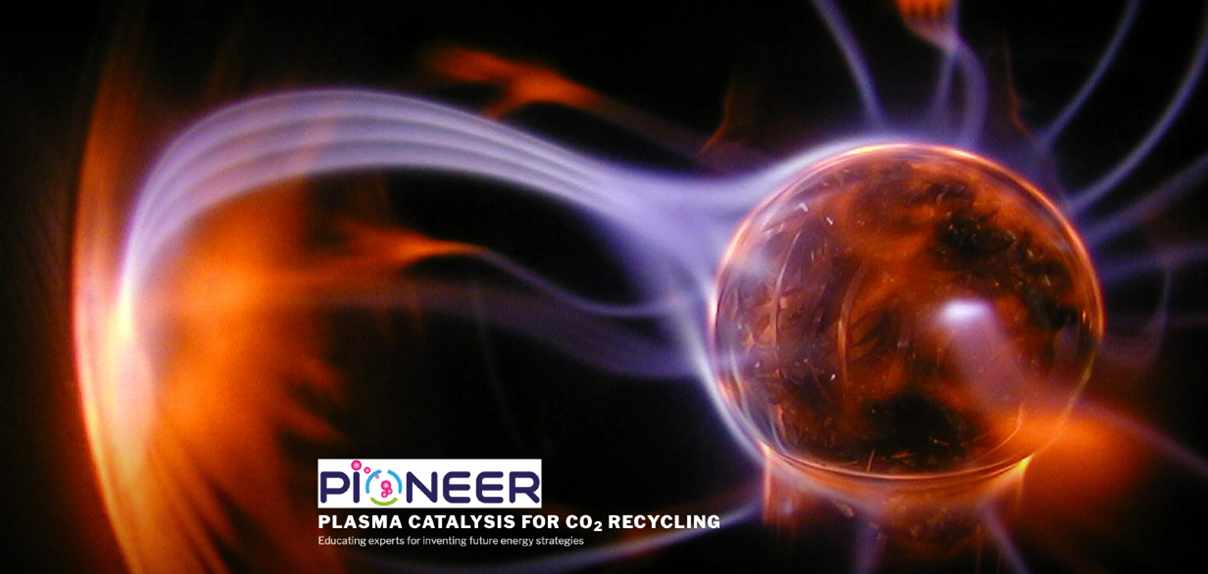
PIONEER - Plasma Catalysis for CO2 recycling
PIONEER is Marie Skłodowska-Curie Action (MSCA) project that aims to give researchers the necessary skills and international experience for a successful career, either in the public or the private sector. The project is an Innovative Training Network (MSCA ITN) implemented by a partnership of high profile universities, research institutions and industrial research partners located in 10 different countries.
A major current challenge to Mankind is to set up a global action plan putting the world on track to avoid dangerous climate change by limiting global warming. While the priority is to reduce CO2 emissions by means of the use of carbon-free energy sources, CO2 capture represents nowadays the most efficient technology in terms of tons of CO2 removed from the atmosphere.
Vis-à-vis CO2 capture followed by storage (CCS), CO2 utilization (CCU) involves the use of the already emitted carbon dioxide to create new products. When combined with the use of renewables and/or Direct Air Capture (DAC), CO2 utilization can clearly contribute to stabilize or even globally reduce CO2 emissions. In this approach, CO2 is no longer considered as a pollutant but as an infinite reservoir of carbon and a raw material, either for its direct use or for its transformation into platform molecules for the chemical industry and/or synthetic fuels, by means of different biological or chemical processes.
No single technology is able to address the whole issue of CO2 emission. Among the technologies that are being explored, the use of non thermal plasmas coupled with catalytic materials is certainly one of the most promising.
Why using plasma catalysis?
The use of plasma-catalysis can potentially apply to any CO2 conversion process, from its hydrogenation, including methanation, to its use in dry, autothermal or bi-, tri-reforming of methane containing gases, with their own specificity, leading moreover to a coupled excitation of the gas mixture.
Why using plasmas?
This is first due to the unique feature of plasmas to be able to activate efficient chemistry “out of thermodynamical equilibrium” .
Why coupling plasmas with catalysts?
The research and technological goals of our PIONEER ITN are therefore to forge “out of the box” catalytic materials capable of boosting the reactivity of NTP as well as designing the most appropriate plasma sources suitable for each CO2 recycling process, based on fundamental understanding of the plasma/catalyst interaction. This motivates the three research work packages of PIONEER.
Our goals
Motivated by the great unexplored potential of plasma/catalysis, the goals of PIONEER to achieve efficient technologies for CO2 conversion are the following:
To gain deeper knowledge on the fundamentals and mechanisms of CO2 plasmas interacting with surfaces and the physicochemical phenomena involved, including CO2 dissociation, to model these phenomena and to be able to predict the behavior and consequences of different CO2 plasmas.
To invent advanced, active, selective and robust catalytic systems specially formulated for plasma-catalytic coupling to optimize CO2 valorization, and study the interaction between the excited species present in CO2 plasmas and solid catalytic surface.
To explore innovative routes for plasma-catalyst interaction, study novel reactor designs involving various types of exposure of the catalytic materials to different kinds of plasmas of diverse energy density, to evaluate the influence of these parameters in reaction mechanisms, kinetics and product yield.
For more information, check the PIONEER website.

